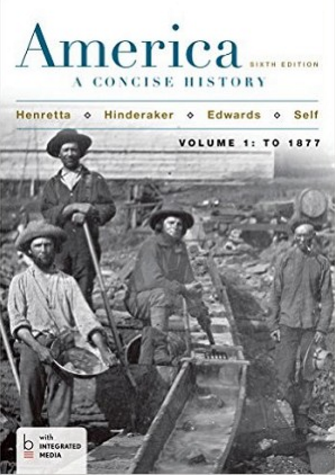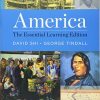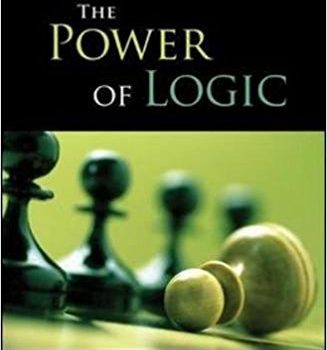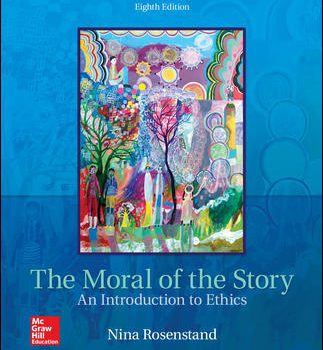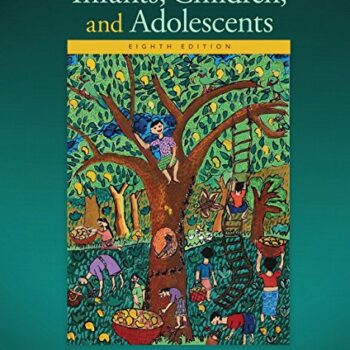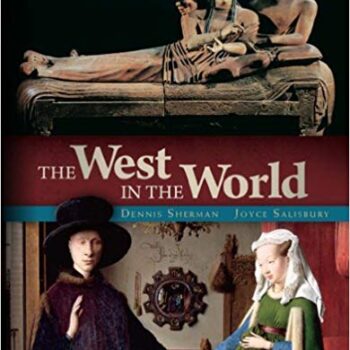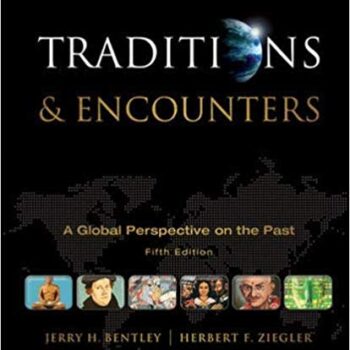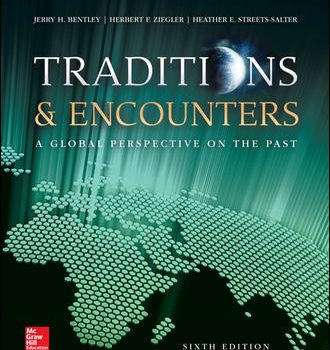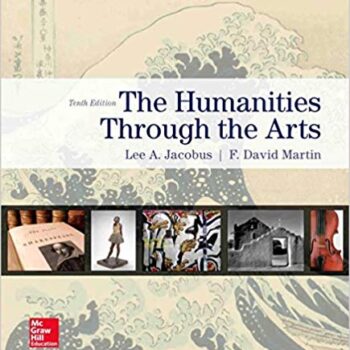The Test Bank for America: A Concise History, Volume 1, 6th Edition is very useful as it enables students and instructors to engage even further with the main topics and historical events presented in the text. It’s available as a test bank or other means to present with a clear purpose the history of America. It goes beyond telling about past events but also explains the important social, political, and economic changes that took place during the period.
Key Benefits of the Test Bank
This Test Bank highlights important historical issues advancing from the time of European exploration through the American Revolutionary War and the subsequent settlement of American institutions. This test bank features questions on major topics such as colonial America, the American Revolution, and the United States as a nation which includes an examination of multiple-choice, short-answer, and essay-type questions. Such questions allow students to gauge their grasp of key issues and revision materials to their quizzes the midterms and the finals.
Core Historical Topics
Through the use of this test bank students will be able to analyze:
- Colonial America and Native Interactions: Describe and analyze patterns of conflict and cooperation between Native Peoples and European settlers as territories transformed through the establishment of new colonies.
- Economic Foundations of Early America: Analyze how mercantilism, cash crops such as tobacco, and triangular trade were vital in building the economy of the colonies and later encouraged the war of independence.
- The Path to Revolution: It is interesting to look at events such as the Boston Tea Party, Stamp Act, and Declaration of Independence that made the colonies hungry for freedom from Britain.
- Foundations of American Government: Examine how the framers of the Constitution and the Bill of Rights, new American leaders, established a new system of government depending on democracy and federalism.
Advantages of Using This Test Bank
As seen in this test bank, the student’s willingness to attempt the sample papers will be positive with over 500 question types, which in this case helps them in the following areas:
- Build Confidence: By working through certain sample examination questions or other questions of a similar format, students should be able to build on their confidence so that when exams come, they know what to expect.
- Identify Key Themes: All questions identified important themes such as religion, culture & education, economics, and foreign relations and as such give all learners a particular view of what areas to intensively study.
- Improve Exam Readiness: The range of topics and the variety of questions in the test bank and their keywords enable students to understand the focus of the question and hence be ready for any form of examination questions.
How to Use the Test Bank for Maximum Advantage
To maximize your use of the Test Bank for America: A Concise History, Volume 1, 6th Edition:
- Review by Topic: Select the relevant portions of the test bank in accordance with the course content being taught in class or prescribed by your teacher. This technique serves to consolidate specific content.
- Answer questions as often and as many times as you need: By doing so, you will be more certain in your knowledge and be able to remember it when taking the exams.
- Make Simple Class Notes: Create your own test bank questions and combine them with your class notes in order to integrate text with lectures on each topic and enhance the understanding of the topic.
Conclusion
The Test Bank for America: A Concise History, Volume 1, 6th Edition is a resource designed as a revision aid as it contains questions based on key strands in American history. From colonization and revolution to building an ideal American democracy, this test bank enables students to learn history in an organized way, achieving their academic goals and deepening their comprehension of US history.
Test Bank For America A Concise History Volume 1 6th Edition
Answer each of the following questions with an essay. Be sure to include specific examples that support your thesis and conclusions.
|
1. |
How were Spanish, French, and Dutch colonial strategies similar? How did they differ? In what ways were the similarities and differences reflected in the nations’ settlements in the New World? |
|
2. |
Explain why there were no major witchcraft scares in the Chesapeake colonies and no uprising like Bacon’s Rebellion in New England. Consider the possible social, economic, and religious causes of both phenomena. |
|
3. |
What factors account for the success of the Puritans in establishing an ordered society in New England? |
|
4. |
What were the major social and environmental developments that made America a new world for both Europeans and Indians? |
|
5. |
What were the factors that spurred people to leave England for the American colonies in the seventeenth century? Which factors influenced their decisions about where to settle in the British North American colonies? |
Answer Key
|
1. |
The answer would ideally include: – Spanish Colonial Strategies and Settlements: Spain’s conquest of the Aztec and Inca empires shaped its approach to settlement in the New World. Spanish colonizers used the existing systems of tribute and labor discipline by granting encomiendas to the leading conquistadors. These leaders co-opted the Indigenous meta system to coerce Indian laborers to serve Spain. Consequently, the gold and silver wealth of the Inca and Aztec societies poured into Spanish coffers. Spanish monarchs and conquistadors also transferred their institutions—municipal councils, legal codes, and the Catholic Church—to the New World to control the people and territory there. The arrival of Spanish men and Africans created a new society in which racial mixture was common, and a system of complex racial categories developed. Spanish priests suppressed indigenous religious ceremonies and converted natives to Christianity. – French Colonial Strategies and Settlements: The French focused on fur trading and Catholic missionary activity among the native population. Although New France became a center for fur trading and missionary work, it languished as a settlement until 1662, when King Louis XIV made it a royal colony and subsidized the migration of indentured servants, who were required to labor for three years in exchange for a salary. The population remained small, but New France’s possessions were expansive. New Orleans and settlements around the Great Lakes ultimately served as home to French merchants, soldiers, and missionaries who traded with and sometimes intermarried with Indians. – Dutch Colonial Strategies and Settlements: Dutch settlement focused on New Netherland (now New York) and New Amsterdam (now Manhattan). The colony did not thrive, however, because its population was too small. Much of the territory was granted as large estates along the Hudson River, but these did not attract Dutch settlers. New Netherland flourished as a fur trading enterprise. Conflicts with Indians in the seventeenth century ultimately led the Dutch to focus more on sugar plantations in Brazil. – Similarities: All acquired new territories for nation, monarch, personal fortune, and Christianity. They justified takeovers in religious and economic terms. They traded with the native populations of the Americas. For all groups, colonization was a process of experimentation and adaptation that required political, social, and cultural innovations. The processes of transformation led to external and internal crises in each region. – Differences: The Spanish and Dutch emphasized conquest, though the Dutch arrived as traders rather than mercenaries like the conquistadores. The French and Spanish used missions and religion as tools for colonizing native populations and acquiring resources. The Spanish and French utilized Indians as social agents of colonization, while the Dutch were interested only in trade with Indians. The Dutch created a small, commercially based colony compared to much larger territorial units controlled by Spain and France. |
|
2. |
The answer would ideally include: – Witchcraft: There were no witchcraft scares in the Chesapeake colonies mainly because of the lack of strong family formation, the development of towns and cities, and the absence of powerful and influential religious institutions. A high death rate and a lower population of women led to a male-orientated orphan colony based more on secular economic pursuits than religious motivations. Without the focus on religion, which motivated New England’s witchcraft scares, conflict and dissent took other forms. – Uprisings: No uprisings like Bacon’s Rebellion occurred in New England mainly because of the stable nature of family formation there, as well as a healthier climate and the existence of enough land for sons and daughters to maintain their independence. In Virginia, due to the surplus of landless laborers and indentured servants, land was more scarce and could not provide prosperity to the lower classes, leading to rebellion. The strong control of the Puritan church and the imposition of hierarchical control by local church authorities over towns and congregations met with relative acceptance by the Puritan population as part of the patriarchal family model of obedience; hence there were no widespread revolts. |
|
3. |
The answer would ideally include: – Environment and Geography: The cold climate of New England discouraged mosquitoes and the diseases they carried. Puritans successfully subdued local Indians, who might have posed an external threat. – Religion: A spiritual mission empowered the Puritans to establish a structured church and a strong moral order that emphasized an organized and orderly society in which class differences, though present, were less apparent than in other settlements. Religion was the important motivation for migration and settlement; lack of focus on money-making limited competition and conflict. When Puritan theology became too demanding, the Puritans changed the rules and regulations to enable a larger number of people to be church members. – Social Organization: The Puritans were a homogenous group, which reduced the likelihood of serious tension and conflict. When dissent arose, they banished the dissenters. They arrived in family and community groups, distributing land through town charters. The Puritans brought a colonial charter with them that granted self-rule. The system of land division was characterized by inheritance, which generally worked against stratification in landholding and social power. |
|
4. |
The answer would ideally include: – Disease: Outbreaks of European diseases, such as smallpox, measles, and influenza, diminished the Indian population and the ability of Indians to resist territorial takeover. At the same time, Europeans in the Chesapeake region were exposed to mosquito-borne illnesses that were new to them and killed large numbers of settlers. – Christianity: The influence of Christian churches made the Americas different for Native Americans. Europeans’ efforts to convert Indians to Catholicism in New France and New Spain provided important justifications for their exploitation. Yet Indians also transformed Christianity by infusing it with some of their own beliefs and traditions. Uniquely American forms of Christianity were different for both Native Americans and Europeans. – Environment: Europeans confronted an environment that was new for them. Many of its plants and animals and all people were different from those of Europe. They adapted to new forms of food, such as maize, squash, and potatoes. For those Europeans who settled in tropical and subtropical regions, the climate was entirely new and they adapted plantation agriculture to create their economic foundation. Indians also experienced new European dietary customs. The European fur trade decreased the populations of many fur-bearing animals in North America. Simultaneously, Europeans introduced new species, such as horses, to the Americas and altered elements of Native Americans’ lives. – Technology: Europeans brought new inventions, including metal tools and pots, the wheel, and guns and gunpowder, to the Americas. The fur trade brought some of these new goods to Indian communities, fostering their dependence on European technology. – Slavery: The institution of slavery was new for many Europeans and Native Americans. In South America and Central America, the old tribute system was adapted to provide coerced labor for the Spanish. In the Chesapeake, black slavery was introduced to the English, who had not made use of it in England. Its introduction in North America created a new form of society for Native Americans, English settlers, and African slaves. |
|
5. |
The answer would ideally include: – Economic Motivations: Merchants took charge of English expansion in the early seventeenth century. The Virginia Company, hoping to emulate the Spanish example, sent a group to Jamestown. Many of these settlers hoped to make a quick profit. Once the region became a successful tobacco plantation colony, it attracted many more settlers who came to better their economic circumstances. The Virginia Company’s policy of allowing settlers to own land gave 100 acres to every freeman who could afford the journey and more to those who imported servants. Those who could not afford the journey came as indentured servants who worked the plantations. They also did so because they hoped to achieve greater economic security. Economic motivations were central for English citizens who settled in the Chesapeake and the Caribbean islands, where tobacco cultivation was successful. After New Netherlands fell to English control in the 1660s, Englishmen seeking economic opportunity also settled in New York. – Religious Motivations: English Catholics left their home country after the English Reformation to escape religious persecution. They settled in Maryland. English Pilgrims and Puritans who were critical of the Church of England left their home country to seek religious freedom in Plymouth and Massachusetts Bay, and later in other New England colonies. The Pilgrims sought to separate themselves from England. The Puritans sought to create a godly society that would serve as a model for other Anglicans. The stability of New England society and the land available in the region eventually drew other settlers as well. – Adventurism: Early seventeenth-century settlements also attracted adventurers. Many of the men who came to Jamestown initially came for neither economic nor religious reasons, but to make a quick profit from valuable commodities such as those in the Spanish colonies. These young men were sorely disappointed to find no gold, and the men fared poorly in their new environment. |

